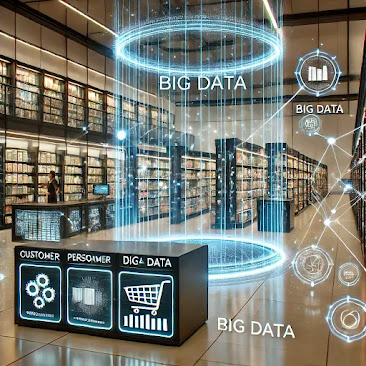Introduction to Big Data:
- Write about what Big Data is, its importance, and its applications in various industries.
Introduction to Big Data: Transforming the Modern World
In today’s digital age, the amount of data generated every second is staggering. From social media interactions to online shopping transactions, from GPS navigation to IoT devices, data is being created at an unprecedented scale. This explosion of data has led to the emergence of a transformative field known as Big Data.
What is Big Data?
Big Data refers to extremely large and complex datasets that traditional data processing tools and techniques cannot handle efficiently. It encompasses structured, semi-structured, and unstructured data that grows rapidly in volume, variety, and velocity. These are often referred to as the 3 Vs of Big Data
Volume: The massive amount of data generated every second (e.g., terabytes to petabytes of data).
Velocity: The speed at which data is generated and processed (e.g., real-time analytics).
Variety: The diverse types of data (e.g., text, images, videos, and sensor data).
Importance of Big Data
Big Data is not just about the data itself but about the ability to analyze and derive actionable insights from it. Here’s why Big Data is essential:
Improved Decision-Making: Organizations can make data-driven decisions by analyzing historical and real-time data.
Enhanced Customer Experience: Personalizing services and recommendations based on customer behavior.
Operational Efficiency: Streamlining operations, predicting maintenance needs, and optimizing resources.
Big Data is transforming industries worldwide. Here are some notable applications:
Competitive Advantage: Gaining insights into market trends and staying ahead of competitors.
Applications of Big Data Across Industries
Healthcare:
Analyzing patient data for predictive diagnostics and personalized treatments.
Tracking disease outbreaks and improving public health responses.
Finance:
Detecting fraudulent transactions using real-time analytics.
Enhancing investment strategies with algorithmic trading and market analysis.
Retail:
Optimizing inventory and supply chains.
Delivering personalized recommendations to customers.
Transportation:
Managing traffic flow and reducing congestion with real-time data from GPS and sensors.
Optimizing logistics and fleet management.
Entertainment:
Recommending content on streaming platforms like Netflix based on viewing history.
Analyzing social media trends to create engaging content.
Agriculture:
Using data from sensors to monitor soil conditions, weather patterns, and crop health.
Optimizing water usage and maximizing yields with precision farming.
Government:
Enhancing public safety with predictive policing.
Improving urban planning with insights from smart city data.




Comments